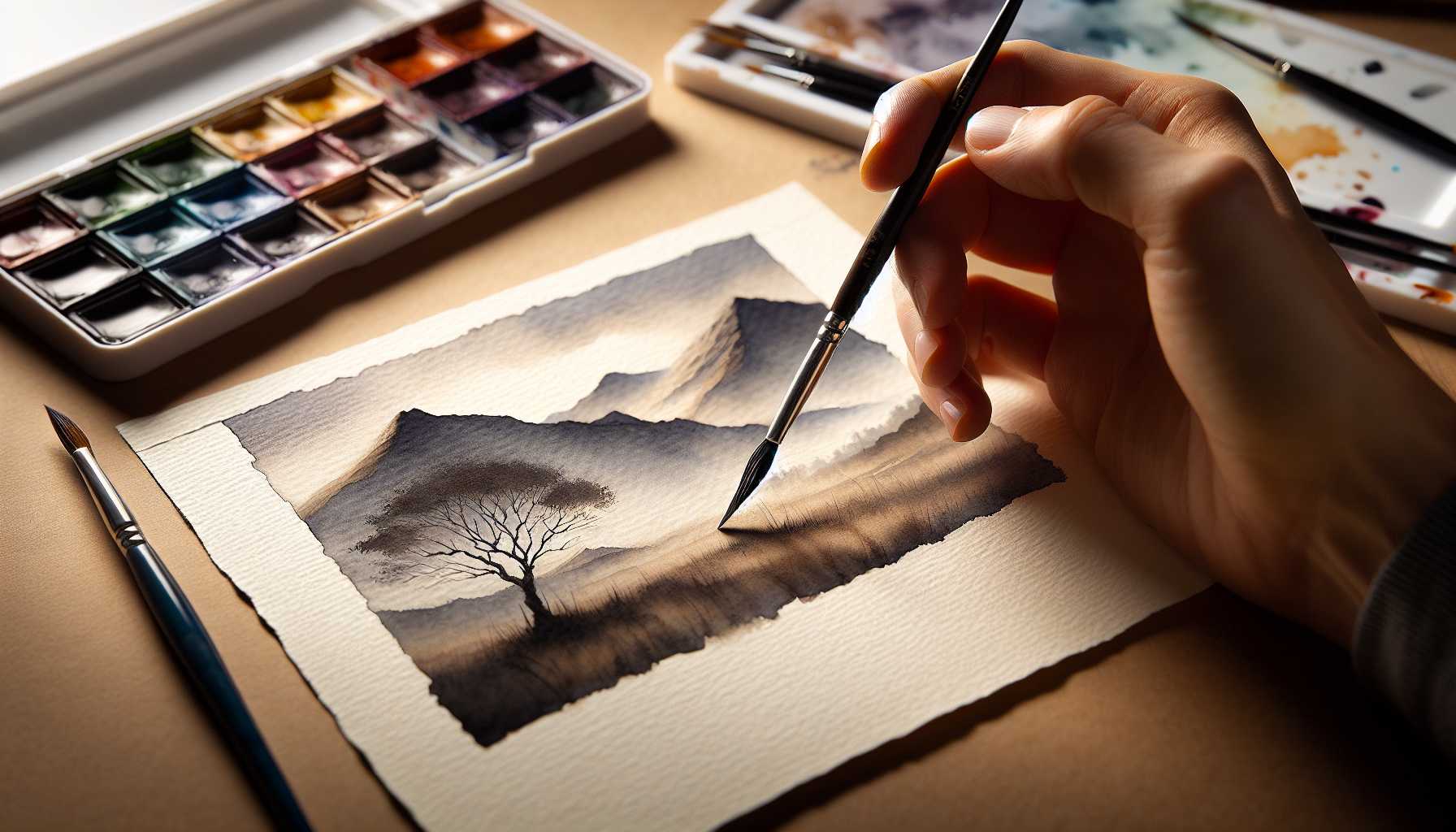Have you ever questioned how certain watercolor paintings possess a magical quality? Quite often, the answer lies in the artist’s command over their painting edges. Come along, and let’s delve into the captivating domain of watercolor edges!
Understanding Watercolor Edges
Edges are the points in your painting where two different shades or colors intersect. They act as the boundaries distinguishing your shapes and crafting depth in your creation. They’re akin to the supporting cast members that enable your painting’s core theme to take center stage.
The Elegance of Soft Edges
Within a painting, soft edges can be compared to soft voices. They emerge when shades subtly flow into one another, generating an ethereal, atmospheric effect. Ideal for illustrating objects like clouds, far-off mountains, or the early morning mist.
Techniques to Create Soft Edges
- Employ wet-on-wet painting for effortless blending
- Utilize ample amounts of water
- Act swiftly while the paint remains fresh
- Maintain your paintbrush full of moisture
- Initiate practice with basic shapes
Hard Edges: Imbuing Boldness and Precision
Hard edges embody your painting’s audacious proclamations. They’re defined as sharp and clear-cut lines that seize the viewer’s attention and establish focal points. Think of features like building corners, tree limbs, or any component you wish to highlight.
Crafting Flawless Hard Edges
- Allow previous layers to dry out thoroughly
- Incorporate less water in your mix
- Paint with a firm and steady hand
- Contemplate using masking fluid for highly defined edges
- Apply a smaller brush for better control
Optimal Utilization of Each Type
Incorporate a mixture of the two! The real enchantment occurs when you amalgamate both types of edges:
* Soft edges for backdrops and atmospheric undertones
* Hard edges for narrative points and crucial details
* Mixed edges for subjects appearing more natural
Typical Edge Control Errors to Sidestep
- Refrain from excessively working on your soft edges
- Evade constructing hard edges indiscriminately
- Remember to predefine your edges prior to painting
- Do not hasten the drying time for hard edges
Mastery Comes With Practice
Kick off with basic drills:
1. Generate gradient squares with soft edges
2. Illustrate geometric shapes with hard edges
3. Merge both in basic landscape sketches
4. Maintain a journal documenting your practice of edge control
Necessary Equipment for Edge Control
- High-quality paintbrushes with good water retention
- Absorbent kitchen towels
- Assorted paper textures
- Pure water supply
- Appropriate paper weight
Concluding Remarks
Always remember, mastering edge control is akin to mastering dance – it demands practice, but as soon as you grasp the rhythm, it becomes an instinct. Don’t hesitate in experimenting and discovering your unique style!
I trust these tips will play a crucial role in mastering edge control as you proceed along your watercolor journey. Keep practicing, continue to paint, and most importantly, enjoy the process! Which edge technique will you venture into first?
Please share your experience with these techniques in the comments. Wishing you an exciting and creative painting journey!
